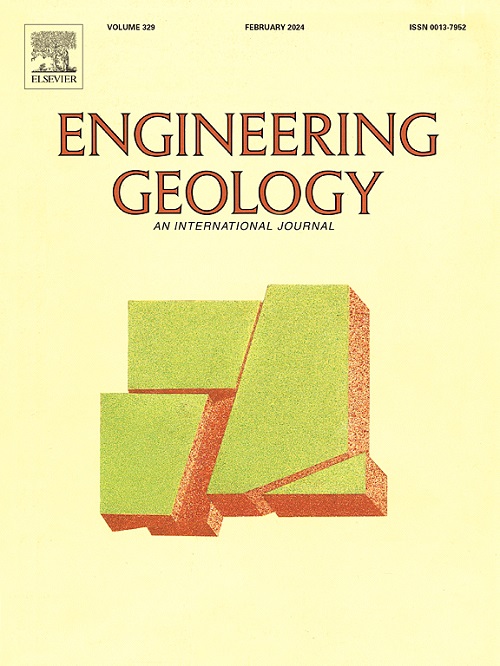堤防边坡破坏道路风险定量评估:蒙特卡罗模拟与物质点法相结合的新框架
IF 8.4
1区 工程技术
Q1 ENGINEERING, GEOLOGICAL
引用次数: 0
摘要
极端降雨事件的频繁发生往往引发大堤坡失稳(LSF),由于“堤防效应”,大堤坡失稳对堤后道路造成严重破坏。本文提出了一种新的道路交通风险定量评估框架。在该框架内,创新地将蒙特卡罗仿真(MCS)与物质点法(MPM)相结合,为模拟LSF与道路破坏之间复杂的动态关系提供了独特的解决方案。MCS为MPM模拟生成精确的故障场景,克服了传统方法在复杂场景系统中处理不确定性的局限性。由于MPM在捕获破坏后变形方面的技术优势,它为评估道路暴露和脆弱性提供了重要的见解。该框架还考虑了长期以来被忽视的道路中断造成的间接损失。将该框架应用于珠江流域石角大堤后道路风险评估,充分证明了该框架的实用性和鲁棒性。与传统的风险评估方法相比,拟议的框架提供了更精细的动态评估,有助于制定更有效的减灾战略。本文章由计算机程序翻译,如有差异,请以英文原文为准。
Quantitative risk assessment of road posed by levee slope failure: A novel framework integrating Monte Carlo simulation and material point method
The frequent occurrence of extreme rainfall events often triggers levee slope failure (LSF), which, due to the “levee effect”, significantly damages the roads behind the levee. This paper presents a novel framework for the quantitative risk assessment of roads posed by LSF. Within the framework, the innovative integration of Monte Carlo simulation (MCS) and Material point method (MPM) provides a unique solution for simulating the complicated dynamic relationship between LSF and road destruction. MCS generates precise failure scenarios for MPM simulations, overcoming the limitations of traditional approaches in addressing uncertainty in complex scenario systems. With its technical superiority in capturing post-failure deformations, MPM offers critical insights for assessing road exposure and vulnerability. The framework also accounts for indirect losses from road disruptions, which have long been overlooked. The application of the framework to the risk assessment of the road behind the Shijiao Levee in the Pearl River Basin fully demonstrates its practicality and robustness. Compared to traditional risk assessment methods, the proposed framework provides a more refined dynamic evaluation, facilitating the formulation of more effective disaster mitigation strategies.
求助全文
通过发布文献求助,成功后即可免费获取论文全文。
去求助
来源期刊

Engineering Geology
地学-地球科学综合
CiteScore
13.70
自引率
12.20%
发文量
327
审稿时长
5.6 months
期刊介绍:
Engineering Geology, an international interdisciplinary journal, serves as a bridge between earth sciences and engineering, focusing on geological and geotechnical engineering. It welcomes studies with relevance to engineering, environmental concerns, and safety, catering to engineering geologists with backgrounds in geology or civil/mining engineering. Topics include applied geomorphology, structural geology, geophysics, geochemistry, environmental geology, hydrogeology, land use planning, natural hazards, remote sensing, soil and rock mechanics, and applied geotechnical engineering. The journal provides a platform for research at the intersection of geology and engineering disciplines.
 求助内容:
求助内容: 应助结果提醒方式:
应助结果提醒方式:


